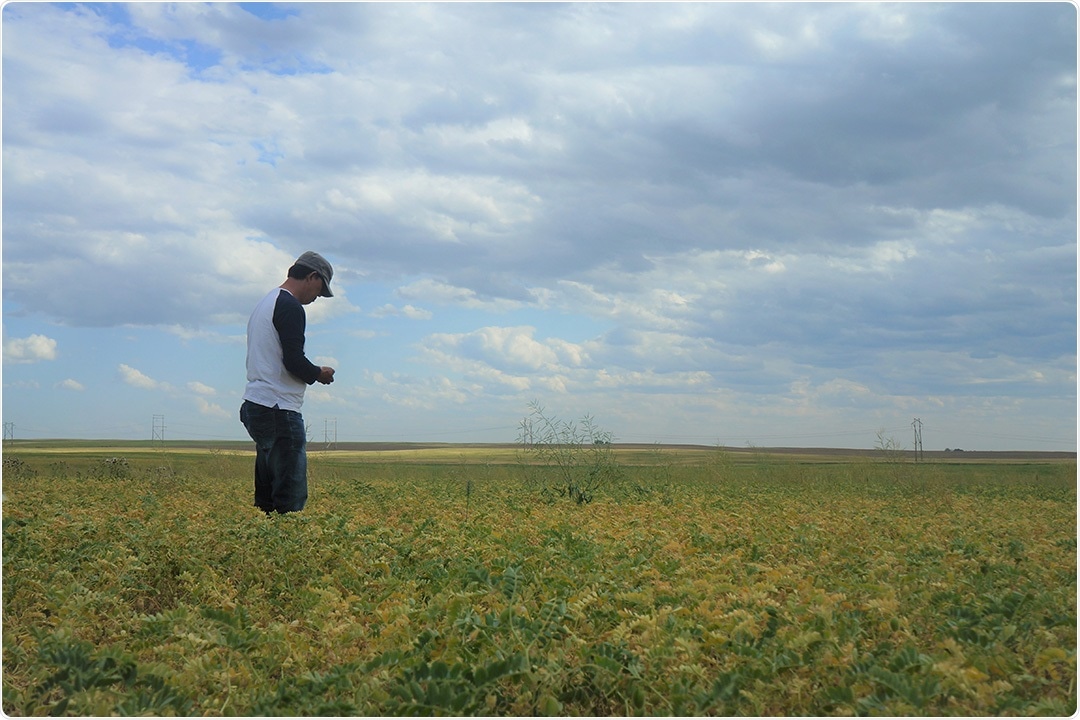Scientists at the University of Saskatchewan (USask) are part of an international team that employed DNA to monitor the genetic evolution and migration of chickpea. The study provides insights that could pave the way for more nutritious and adaptable varieties.

USask researcher Bunyamin Tar’an inspects a chickpea field near Limerick, Saskatchewan in the summer of 2020. He is part of an international team whose research was published in Nature this week. Image Credit: Bunyamin Tar’an.
For a major part of the world, enhancements to this significant crop could help realize “zero hunger” on earth. The results of the study were reported in an article published on November 10th, 2021, in Nature.
Dr. Bunyamin Tar’an (Ph.D.) and Dr. Amit Deokar (Ph.D.) from the USask College of Agriculture and Bioresources contributed to the overall study and sequenced the genetics of 200 Canadian chickpea plants while executing related data analyses.
Chickpeas are one of the main protein sources for hundreds of millions of people— especially in South Asia, Africa and other parts of the world. The research provides an avenue to support global efforts to develop chickpeas with even better nutritional value as well as more climate-resilient varieties.”
Dr Bunyamin Tar’an, PhD, College of Agriculture and Bioresources, University of Saskatchewan
The USask research that was part of this study was financially supported by the Saskatchewan Ministry of Agriculture and the Saskatchewan Pulse Growers.
By employing whole genome sequencing, we have been able to affirm the history of chickpea’s origin in the Fertile Crescent (a crescent-shaped region in the Middle East, known to be home to some of the earth’s earliest civilizations) and identify two paths of diffusion or migration of chickpea to the rest of the world.”
Prof. Rajeev Varshney, Study Leader and Research Program Director, International Crops Research Institute for the Semi-Arid Tropics
“One path indicates diffusion to South Asia and East Africa, and the other suggests diffusion to the Mediterranean region (probably through Turkey) as well as to the Black Sea and Central Asia (up to Afghanistan),” added Prof. Varshney.
“More importantly, this research provides a complete picture of genetic variation within chickpea and a validated roadmap for using the knowledge and genomic resources to improve the crop,” Prof. Varshney concluded.
Source:
Journal reference:
Varshney, R. K., et al. (2021) A chickpea genetic variation map based on the sequencing of 3,366 genomes. Nature. doi.org/10.1038/s41586-021-04066-1.